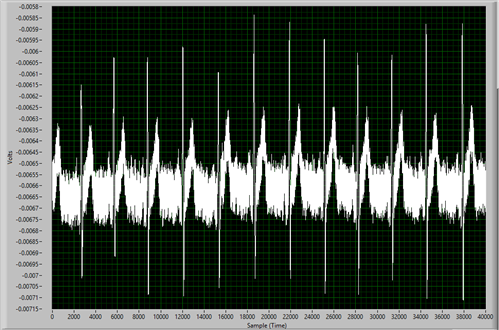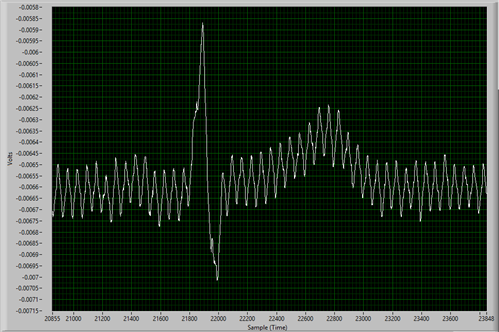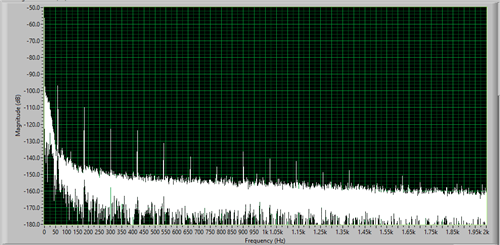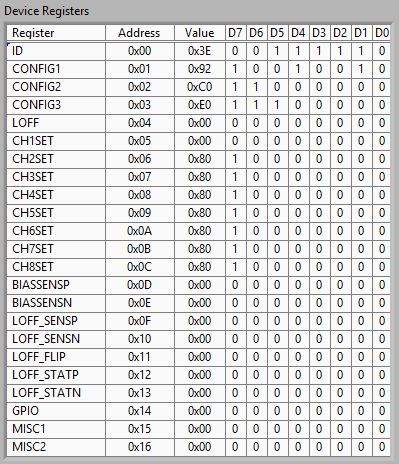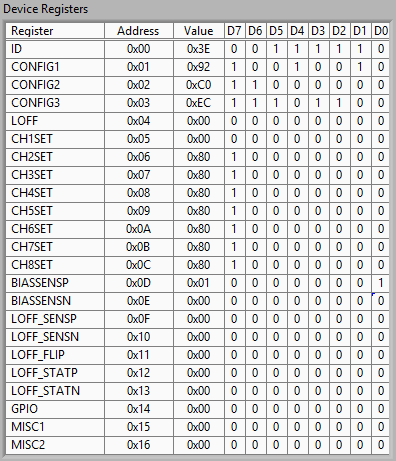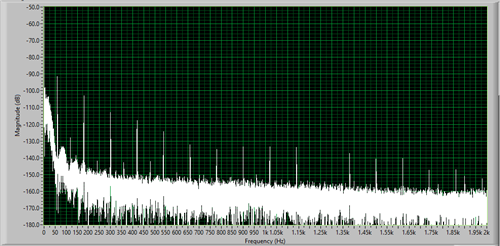Other Parts Discussed in Thread: ADS1299, ADS1298
I am Lead I ECG with the ADS1299. I have three electrodes connected to the board with the following configuration:
- LA - > CH1 +
- RA -> CH1 -
- RLD -> JP17 (Right Pin)
I have configured the ADC registers like this:
While the signal does look okay and clearly shows the QRS complex it is very noisy.
If I zoom in on one beat you can clearly see the HFN
I believe that this HFN is powerline noise and the FFT of the signal seems to support that hypothesis.
I want to know if it is possible to remove it in the analog domain. I know that I can use some kind of LPF in post processing but I'm concerned about introducing a delay.



